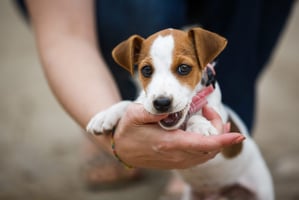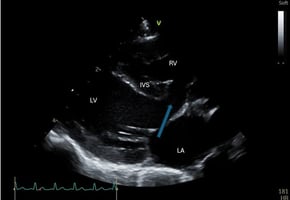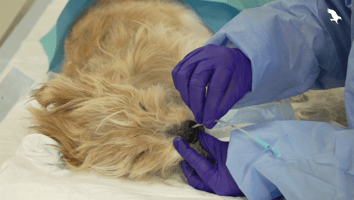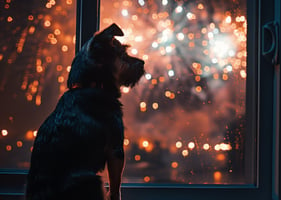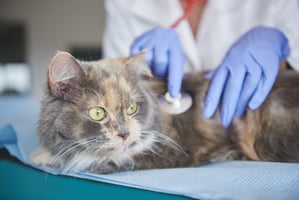Dental operations are common in small animal practice, but a recent study (Shoop-Worrall et all, 2022) identified that patients undergoing dental procedures had 8.5 times the odds of GA/sedative-related death within 48 hours of the procedure compared to diagnostic procedures. While this is likely partly due to the increased age of dental patients, the duration of anaesthetic and the operation itself are likely to be contributing factors – so what can you, as a general practitioner or an RVN, do to reduce the risk to your patients in veterinary dentistry?
How can you reduce risk in small animal dentistry?
Pre-anaesthetic checks
One of the most important things you can do to reduce the risk to your dental patients is a good pre-anaesthetic check. That doesn’t necessarily mean blood tests – Alef et al, 2008 and Diaz Arias, M. D. M (2022) showed they might not be clinically relevant – but there should be a good clinical exam, and blood tests should be used if there are indications they might help. For example, senior patients probably should have a blood test, since one study (Joubert, 2007) found 30 out of 101 dogs received a new diagnosis from a pre-anaesthetic screening test. Make sure this check isn’t just a tick-box exercise – you should use it to consider choices for anaesthetic drugs, pain relief, and even anaesthetic length.
Staged dentals
Talking of anaesthetic length, it’s often thought that longer anaesthetics are less safe, although this is still debated (Weiss et al, 2025, Redondo et al, 2023). There's no getting around that a comprehensive dental treatment is a long operation, but you can break it up into smaller chunks. Consider staged dentals – where you sedate for examination and radiographs, then plan the treatment part for another day. If the x-rays show significant work needs doing, you can even split the treatment into two parts, potentially reducing anaesthetic risk.
Radiographs
There’s no getting around it, dental radiographs are necessary to do a good, thorough job. They also help make pet dentals safer, because dental x-rays can help with decision planning (you won’t go digging around for ages for a root that isn’t there!). If your practice hasn’t invested in dental radiography yet, it’s about time – and this free dental radiography webinar is here to help!
Cuffed ET tubes + throat packs
The risk of aspiration pneumonia is high in veterinary dentistry, as the animals are anaesthetised and there’s a lot of fluid moving around. Make sure you cuff ET tubes (with a low-pressure cuff) and pack the throat with a radio-opaque swab or sponge. The throat pack must be removed at the end of the procedure – tying it to the ET tube is a good way to make sure it gets removed during extubation.
Monitoring
Obviously, excellent monitoring is essential. That means not just fantastic equipment (a multiparameter is ideal) but a competent anaesthesiologist is also necessary. If you have (or are!) a dental-keen RVN, the Nurse Certificate in Dentistry is worthwhile and covers dental anaesthesia. Alternatively, for smaller practices where nurses have to be generalists, the anaesthesia techniques covered in the Nurse Certificate in Anaesthesia are helpful in dental operations.
Gags
Mouth gags are not recommended in cats due to the risk of blindness, but your hands can do just as much damage as a gag if you hold the mouth wide open. To reduce risk, a veterinary nurse can use a timer to remind you to relax the jaw for a minute or two.
Local Anaesthetic
Using local anaesthetic ‘nerve blocks’ reduces the inhalant anaesthesia needed, and therefore reduces the risk of the operation. It also improves recovery, since the block lasts for a while. If you aren’t confident with your local anaesthetic techniques, booking onto one of our practical short courses may be worthwhile.
“With confidence and improved technique comes speed and client satisfaction – 60% of our alumni interviewed in 2023 saw an immediate uptick in clinic efficiency, meaning practices quickly recouped training costs."
CPD and Certificates
Keeping up with dental CPD isn’t easy, but if dentistry is something you do a lot of, it’s well worthwhile. We offer a number of short courses to allow you to practice your skills in-person, but to really reduce risk in small animal dentistry, encouraging somebody in the practice to take a veterinary dentistry certificate is ideal. Not only will they be appraised of the latest evidence and knowledge, but they’ll gain valuable anaesthetic skills, learn how to apply the best dental nerve blocks, and be able to undertake surgeries with more confidence.
Conclusion
Although small animal dentistry is a large part of companion animal practice income, it can still be a common sticking point for vets and nurses. Although dentistry contains inherent risks due to the age of animals involved, having properly trained nurses and vets can make it smoother and reduce many of the risks of the anaesthesia. With confidence and improved technique comes speed and client satisfaction – 60% of our alumni interviewed in 2023 saw an immediate uptick in clinic efficiency, meaning practices quickly recouped training costs. Don’t forget that we also offer the training for the veterinary nurse certificate in dentistry too, so you can build a team that works well together and truly masters this important part of practice income.
After graduating from the University of Nottingham in 2016, Jo moved into small animal practice in the midlands, where she grew a passion for client communication and the subjects that most need it - like geriatrics and dermatology. Since 2020 she has worked as a locum vet in the Channel Islands as well as as a content writer in pet health topics.



